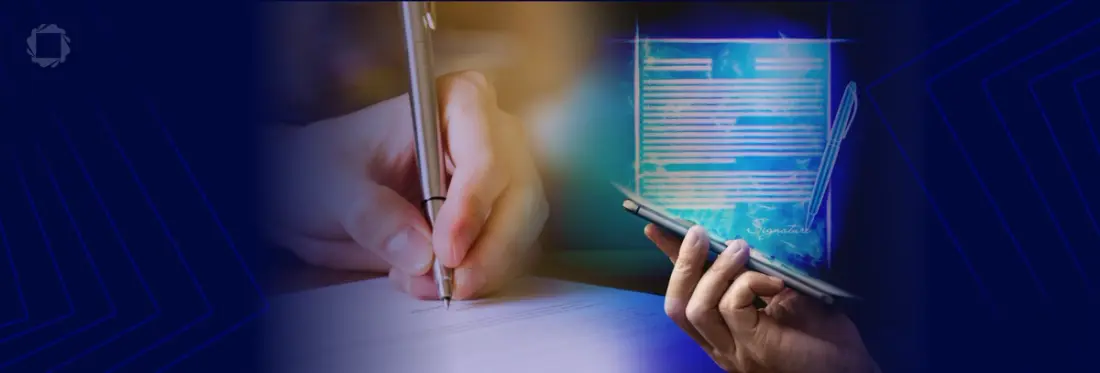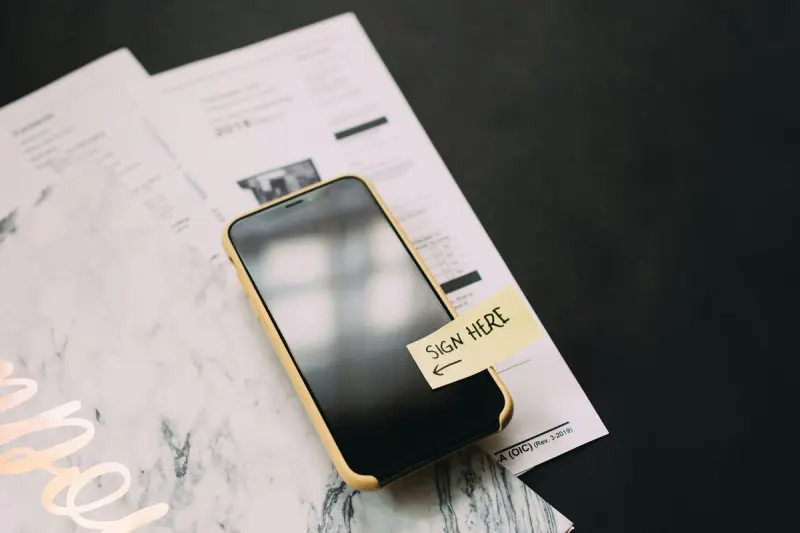A Signature Move: The History and Evolution of Digital Signatures
By Nikki Manthey | 2024 Feb 16

6 min
Tags
digital signature
e-signature
security
Summary: The days of paper and ink are rapidly giving way to an era of digital signing convenience. But where did digital signatures come from and how do they work? Learn how signatures have evolved and get a comprehensive overview of the benefits of digital signature technology.
Since their ink-ception thousands of years ago, signatures have been a functional symbol of trust. A signature is a promise or guarantee, and whether it’s penned in script with a quill or quickly scrawled with a ballpoint pen, the method of signing has largely remained unchanged since ancient times. Until now.
Though signatures remain ubiquitous in all aspects of life, from employment contracts to house buying to financial paperwork and beyond, the digital transformation has fundamentally altered the way signatures work. The days of paper and ink have faded away and we’ve entered the era of digitized convenience. You can now sign anything, anytime, from anywhere in the world and enjoy the peace of mind that comes with data security.
The digital signature industry is lucrative, too. Globally, it was valued at US$3.92 billion in 2022 and is expected to surge to $43.14 billion by 2030.
But before we dive into the future of digital signatures, it’s important to know about their origins and evolution.
Read on to learn about the difference between wet signatures, electronic signatures, and digital signatures, the benefits of digital signature technology, and how you can incorporate it into your own workflows.
Where it All Began: What is a Wet Signature?
Wet signatures are the OG way to sign on the dotted line. This method refers to a physical signature on a piece of paper, inked using a pen or other writing implement. The reason it’s called a “wet” signature is because it implies the ink will need time to dry. (Though advancements in pen technology mean you typically won’t have to wait very long.)
This is a simple and effective method of signing important paperwork. In fact, some government agencies and private businesses still require wet signatures, even with the meteoric rise of digital signing options.
However, there are a few drawbacks to wet signatures. They can be time consuming and inconvenient, since it requires the signing party to be physically present. Alternatively, wet signatures can be done via mail, but then you have to factor in delivery and return times. Security and forgery can be an issue for long-distance wet signatures, too. If you don’t see the person sign, how do you know for sure that the right person actually signed the document?
Then there’s physical storage space. If your business requires you to keep thousands of signed documents for years, you’ve got to find a secure place to store them. And that’s a lot of heavy lifting.
Wet signatures were fine for thousands of years. But in a digital world where data security is more important than ever (and methods of unauthorized access to your data are getting more sophisticated), it’s time to move beyond pen and paper.

What is an Electronic Signature?
An electronic signature, also commonly known as an e-signature, is a digital markup that’s added to a document like a PDF or Microsoft Word file. This digital markup can include a typed name, drawn signature, uploaded signature image, or a check box. An e-signature functions the same way as a wet signature, except that the document can be signed online through an e-signature provider (like Xodo Sign by Apryse). Electronic signatures are considered legally binding depending on your jurisdiction.
Taking the signing process fully online is, of course, much more convenient. It enables all parties to quickly send and sign documents anywhere, anytime, on almost any device. Even major life events like buying a house or accepting your dream job can now be completed via e-signature.
Learn how Apryse helped Egnyte provide 17,000 businesses with an e-signature solution. Read the case study.
Electronic signatures are not invulnerable to the possibility of tampering, though. Since they’re a digital representation of a physical signature, they don’t always come with proof of identity. For example, anyone who gains access to a signing party’s phone could conceivably upload an e-signature on their behalf. Additionally, PDF software can’t always verify that the document hasn’t been modified since it was signed.
As online risks like phishing and data breaches become more common, the need to ensure the highest level of security and proof of identity is imperative. Enter digital signatures.
What is a Digital Signature?
A digital signature is much more than a simple digital document markup. It’s a cryptographic solution that produces a verifiably untampered document. Digital signatures authenticate the signer’s identity, signature origin, and digital document status.
This level of security is ideal for signed contracts and where there’s any potential risk, or where privacy and proof of identity is essential. Certain jurisdictions may also have regulatory requirements for digital signatures.
In the EU, for example, eIDAS (Electronic Identification and Trust Services) provides the legal framework for electronic signatures. Included in this framework is PAdES, a standard that covers PDF documents. PAdES introduces a set of restrictions and extensions in the PDF format to enhance security and validation methods for electronic signatures.
Apryse digital signature solutions like WebViewer and the PDF SDK (Software Development Kit) fully support the PAdES standard, ensuring a high level of data security and privacy.
For more technical details on how digital signatures work, check out our Ultimate Guide to Digital Signatures.

Benefits of Digital Signature Technology
Security, speed, and convenience lead the pack when it comes to the benefits of digital signature technology. However, solutions like Apryse WebViewer and our core SDK offer much more than the basics. (Though we’ve got those top three covered, too.) Let’s dive into a few more benefits of digital signature solutions:
Cost effective: The average cost of a data breach in 2023 was US$4.5 million, according to IBM. Using digital signature technology helps reduce the risk of unauthorized parties gaining access to sensitive data, which represents a large business risk. Sending paper-based workflows to the shredder also helps save approximately 55–78% in operational and administrative costs.
Improved customer experience: The key to successful digital signature use is making it feel effortless and accessible for the customer. Attention spans are getting shorter, averaging about 47 seconds on a screen. This means people are much less likely to go hunting around a website to find the forms they need to sign. Embedding digital signature solutions directly into your apps or platforms helps boost customer engagement and significantly improve their experience – things that keep them coming back.
Keep your brand at the forefront: A lot of customers, especially younger generations, are much more likely to buy from a brand whose values align with their own. This type of loyalty is why it’s so important to create a consistent brand experience – you don’t want your digital signature solution to look generic or like anyone else’s. Apryse enables you to easily add branded logos, colors, and customized digital signature processes, ensuring a consistent brand experience from start to finish.
Easy integration: Apryse SDKs are designed to easily integrate with your existing tech stack, which makes adding digital signature functionality quick and intuitive. Apryse WebViewer enables you to create complete, custom signing workflows, including signature field assignment, signature creation, collection, and validation, all within the security of a browser.
To see Apryse WebViewer’s digital signature solution in action, check out this video:
Add Digital Signatures to Your Workflows Today
The business world continues to find new use cases for digital signatures before the ink’s even dry on older ones. Incorporating fast and secure digital signature solutions like those offered by Apryse helps you stay at the forefront of this technology, ensuring your signature solutions offer security, convenience, cost effectiveness, and more.
If you’d like to try out Apryse WebViewer’s digital signature functionality, head over to our demo. If you’re ready to add these tools to your workflows, start a 30-day trial today. Or, feel free to get in touch with our team if you want to talk about all things digital signature.
Tags
digital signature
e-signature
security

Nikki Manthey
Share this post


